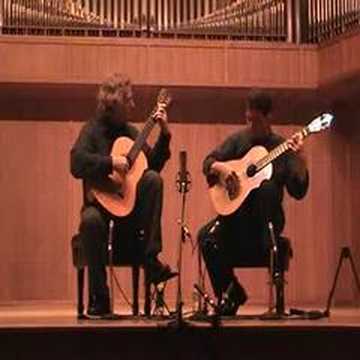«Hail, Bright Cecilia!», Ode for St. Cecilia’s Day, Z.328 (1692)
1. [Symphony] [Introduction] – Canzona – Adagio – Canzona – Adagio – Allegro – Grave – Allegro
2. «Hail, bright Cecilia!»
3. «Hark, hark, each tree its silence breaks»
4. «Tis Nature’s voice»
5. «Soul of the world»
6. «Thou tun’st this world below, the spheres above»
7. «With that sublime celestial lay»
8. «Wondrous machine!»
9. «The airy violin»
10. «In vain the am’rous flute and soft guitar»
11. «The fife, and all the harmony of war»
12. «Let these amongst themselves contest»
13. «Hail, bright Cecilia, hail to thee!»
Gabrieli Consort
Gabrieli Players
Paul McCreesh
«Hail! Bright Cecilia» is an important work in the history of music. Influenced as he was by Italian writing, Purcell helped permanently integrate the Italian style into English musical composition. It also was an important influence on Handel’s writing, and the history of choral music would not be the same without it.
Saint Cecilia was a third century Roman martyr, and is traditionally known as the patron saint of music and of the blind. She had vowed to remain a virgin as a child, but because she was a noblewoman, she was forced to marry. She married Valerian, a pagan, on the condition that she be allowed to remain a virgin. She told him that an angel of God had told her to take a vow of chastity, but he wanted to see the angel. He came home one day and found Cecilia speaking with the angel, and converted soon afterwards, as did his brother Tiburtius. She was martyred by the prefect Almachius when she gave away all her possessions to the poor, against his commands. He tried to have her burned, but had to have her beheaded when the fire didn’t scathe her. Both Valerian and Tiburtius had been martyred before her, and Valerian also became a saint. She was buried in Rome, and when she was canonized, she became the patroness of music. She is often depicted playing the organ.
The earliest recorded date of a public celebration of the Feast of Saint Cecilia is in 1570 at Evreaux in Normandy. Her feast day is November 22. They gave prizes for the finest musical compositions and the best composers entered the competition. Lassus is known to have taken part. The celebrations of the Feast of St. Cecilia in Purcell’s day were not a result of these earlier celebrations. There was no continuum, as far as anyone knows. A group called the «Musical Society», a group of men that included the publisher John Playford, initiated the celebrations in 1682. The singers that took part were from Westminster Abbey Choir, St. Paul’s Cathedral, and the Chapel Royal. The musicians were from the King’s band and from the theaters, so many of them were professionals. In 1683, the «Musical Society» commissioned the first of Purcell’s Odes for St. Cecilia’s Day. It was a choral work on a grand scale, and for the next twenty years it was the model that other composers emulated. The «Musical Society» didn’t commission another Ode for St. Cecilia’s Day from Purcell until 1692, but other composers such as Blow, Eccles, and Clarke wrote odes for the Festivities in the meantime.
In 1692, the «Gentlemen Lovers of Musick» commissioned another ode from Mr. Purcell. «Hail, Bright Cecilia!» is a brilliant work for large choruses, orchestra, soloists and vocal ensembles. It has thirteen movements and sets a poem by the Reverend Nicholas Brady in praise of Cecilia, music, and the instruments of music. Large scale choral works were new, and were inspired, in part, by a man named Giovanni Battista Draghi, an Italian with whom Purcell had studied. It is the type of choral writing that influenced Handel’s compositions, and marks the beginning of the secular choral tradition in England. It was secular choral music because the celebration of St. Cecilia’s Day was a civic entertainment, put on for the entire population. The musicians that took part made money off it; it was a commercial venture for them, and the Odes that were commissioned for the celebrations were performed in public concert halls. They added to the professional musical life of the city.
In the composition of «Hail, Bright Cecilia!», Purcell supplied an unbelievable amount of variety and diversity, coupled with unifying forces that resolve the diverse elements into a complete whole. One of the unifying elements is the structure. Purcell walks the listener through eight key centers; he begins in D Major and minor, and two third of the way through the piece ends up in E minor. Then he travels back again to end the work in D. He composed two large choruses, one after the opening symphony, and one at the very end, that balance one another. And at the very center is a third chorus entitled «Soul of the World». It is about the creation of the world, the creation of music, and of the resolution of all into «Perfect Harmony.» The overall formal balance of the work is incredible. [Allmusic.com]
Art by Lucio Fontana









